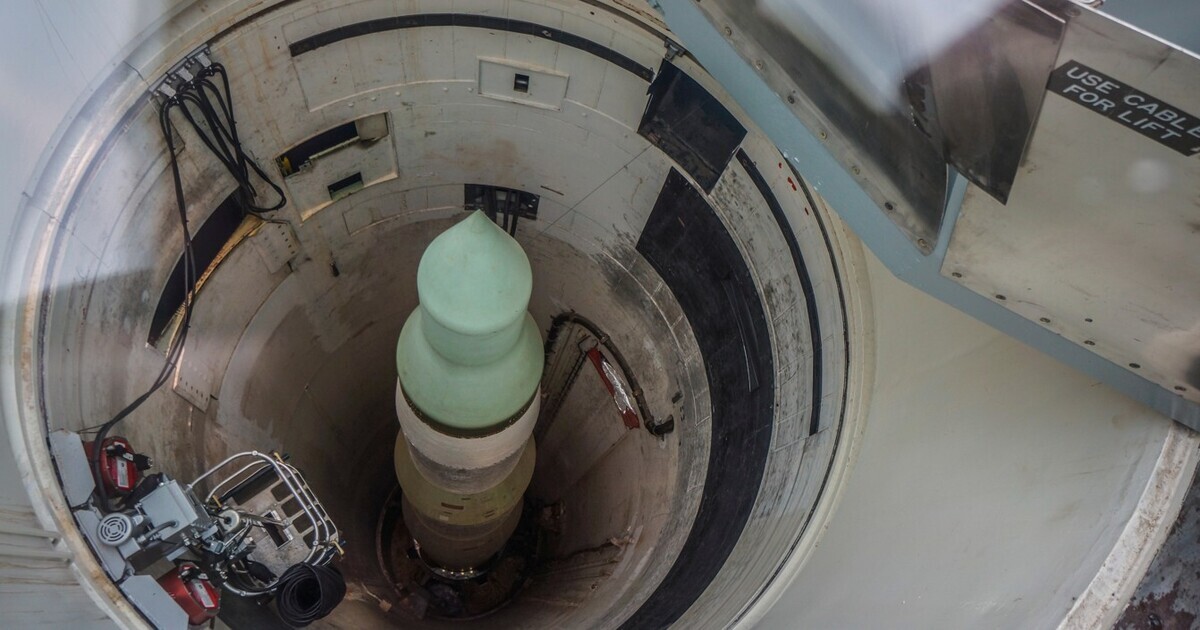Latin America at the Crossroads: Reviving Nuclear Leadership for a Safer World
Once a global leader in nuclear disarmament, Latin America faces a critical decision: Reclaim its moral authority or risk irrelevance.
July 9, 2025

A Strategic Assessment Memo (SAM) from the Global Ideas Center
You may quote from this text, provided you mention the name of the author and reference it as a new Strategic Assessment Memo (SAM) published by the Global Ideas Center in Berlin on The Globalist.
In 1967, Latin America and the Caribbean made history. With the Treaty of Tlatelolco, it became the world’s first nuclear-weapon-free zone, positioning itself as a moral compass in a world on the brink of annihilation.
For decades, the region led by example in disarmament affairs — but sadly, that is no longer true. Today, it stands at a crossroads — one defined not only by what it chooses to do, but by what it risks by remaining silent regarding the prohibition of nuclear weapons.
Reawakened global fears of nuclear use
The current geopolitical landscape — with an increased complicity by war in Ukraine, rising U.S.-Iran tensions and the modernization of nuclear arsenals — has reawakened global fears of nuclear use.
From AI-integrated weapons systems to doctrines that lower the threshold for nuclear deployment, humanity is closer to nuclear incidents than at any point since the Cold War. Amid this crisis, Latin America’s voice is notably subdued.
While 13 Latin American and Caribbean states have signed and ratified the Treaty on the Prohibition of Nuclear Weapons (TPNW), major regional players remain outside its framework. Brazil continues to invest in enriched uranium for energy and naval propulsion, Argentina possesses significant uranium reserves and Colombia has shown little interest in signing the treaty.
This absence creates a vacuum in regional leadership and undermines the disarmament legacy Latin America once proudly upheld.
From vanguard to vacancy
Latin America and the Caribbean were once a leader in disarmament diplomacy. The creation of the Treaty of Tlatelolco laid the foundation for subsequent nuclear-weapon-free zones in Africa, Southeast Asia and Central Asia.
The region’s leadership helped shift global attitudes and created legal precedents for future treaties — including the TPNW. Yet, that energy has decreased.
Political volatility, economic fragility and growing military-industrial ties — often fostered by external actors (private companies) — have diluted the region’s commitment to disarmament diplomacy.
Passive complicity
In some cases, non-alignment has turned into passive complicity. Fears of alienating NATO allies, geopolitical uncertainty and a lack of public debate have stalled progress.
Brazil, for instance, insists that the TPNW could conflict with its civilian nuclear program — a claim not fully supported by legal analysis because nuclear energy is not directly connected with nuclear weapons.
Colombia, meanwhile, has focused more on internal security and organized crime — sidelining global arms control debates. These positions typically reflect not national disinterest, but a challenge to keep relevant disarmament on the current political agenda of the region.
Nuclear weapon states exerting influence
Meanwhile, nuclear-armed powers continue to exert influence in Latin America — through arms deals, defense pacts and infrastructure investments.
For example, both the United States and China are competing for influence in critical infrastructure — including ports and satellite monitoring stations — sometimes linked to dual-use technologies.
These partnerships, while not openly military, create subtle yet real pressures on countries to maintain strategic ambiguity rather than take firm disarmament stances.
A humanitarian and development imperative
The Treaty is not merely symbolic. It reasserts the illegitimacy of nuclear weapons under international law, establishes victim assistance obligations and reinforces the humanitarian rationale for disarmament.
Notably, it is the first treaty to incorporate environmental remediation measures — a critical point for biodiversity-rich countries in the Latin American and Caribbean region.
Radioactive contamination from nuclear testing, while not directly inflicted upon the region, has disproportionate effects on Indigenous populations elsewhere — linking global nuclear justice with local environmental justice.
Supporting Latin America’s development goals
Endorsing the Treaty aligns with Latin America’s developmental goals. Healthcare, infrastructure, education and climate resilience — the pillars of any progressive regional agenda — stand in direct competition with rising global military expenditures.
According to a 2023 report by the International Campaign to Abolish Nuclear Weapons (ICAN), nuclear-armed states spent over $91 billion on nuclear weapons in a single year. Based on the Stockholm International Peace Research Institute’s (SIPRI) latest report, military expenditure has risen consistently in the last 10 years. The opportunity cost is staggering — schools not funded, roads not built and vaccines not distributed.
For Latin America — a region fighting against historical economic inequality and the long-term effects of dealing with internal conflicts — disarmament should be a development strategy.
The role of civil society
Latin American civil society is one of the most powerful, yet underutilized forces in the disarmament movement. Youth movements, feminist collectives, Indigenous organizations, faith-based institutions and academic think tanks have the credibility and moral authority to shift the conversation from elite diplomacy to grassroots urgency.
Reframing nuclear disarmament as an issue of social justice is key. Nuclear weapons represent the concentration of destructive power in the hands of a few, often at the expense of the Global South.
They exacerbate global hierarchies, extractive economies and environmental destruction. Latin America knows these systems all too well — and has the moral voice to contest them.
Organizations such as ICAN have already launched regional campaigns to raise awareness and pressure governments. But what is needed is a broader coalition. Artists, journalists and educators must become cultural champions in humanitarian disarmament — challenging the myth that nuclear weapons equal security.
A geopolitical window: Risks and opportunities
Current global instability also creates unexpected opportunities. The erosion of trust in international institutions and the evident failures of traditional security doctrines open space for alternative voices.
Latin America can position itself as a counter-model — one that prioritizes peace, sustainability and cooperative security.
Furthermore, the Treaty of Tlatelolco provides a unique legal and moral foundation for advancing this leadership. It shows that regional commitments can influence global norms.
However, the treaty must not be treated as a historical relic — it must be reinterpreted as a living document that invites countries to take the next step: Joining the TPNW.
Towards a moral reawakening
Latin America is more than a geographic entity — it is a moral agent. At a time when nuclear dangers are intensifying, the region has the potential to rise again — not through military might, but through principled leadership.
Its silence could be tomorrow’s regret. But today’s action could be a cornerstone of global hope.
The question is not whether Latin America matters in the nuclear debate. It is whether it will choose to matter again.
Takeaways
The current geopolitical landscape — with an increased complicity by war in Ukraine, rising U.S.-Iran tensions and the modernization of nuclear arsenals — has reawakened global fears of nuclear weapons.
From AI-integrated weapons systems to doctrines that lower the threshold for nuclear deployment, humanity is closer to nuclear incidents than at any point since the Cold War. Amid this crisis, Latin America’s voice is notably subdued.
While 13 Latin American and Caribbean states have signed and ratified the Treaty on the Prohibition of Nuclear Weapons (TPNW), major regional players like Brazil, Argentina and Colombia remain outside its framework.
Reframing nuclear disarmament as an issue of social justice is key. Nuclear weapons represent the concentration of destructive power in the hands of a few, often at the expense of the Global South.
Latin American civil society is one of the most powerful yet underutilized forces in the disarmament movement. It has the credibility and moral authority to shift the conversation from elite diplomacy to grassroots urgency.
Current global instability also creates unexpected opportunities. The erosion of trust in international institutions and the evident failures of traditional security doctrines open space for alternative voices.
Latin America is more than a geographic entity — it is a moral agent. At a time when nuclear dangers are intensifying, the region has the potential to rise again — not through military might, but through principled leadership.
Today, Latin America stands at a crossroads — one defined not only by what it chooses to do, but by what it risks by remaining silent regarding the prohibition of nuclear weapons.
Latin America and the Caribbean were once a leader in disarmament diplomacy. The creation of the Treaty of Tlatelolco laid the foundation for subsequent nuclear-weapon-free zones in Africa, Southeast Asia and Central Asia.
For Latin America — a region fighting against historical economic inequality and the long-term effects of dealing with internal conflicts — disarmament should be a development strategy.
A Strategic Assessment Memo (SAM) from the Global Ideas Center
You may quote from this text, provided you mention the name of the author and reference it as a new Strategic Assessment Memo (SAM) published by the Global Ideas Center in Berlin on The Globalist.


